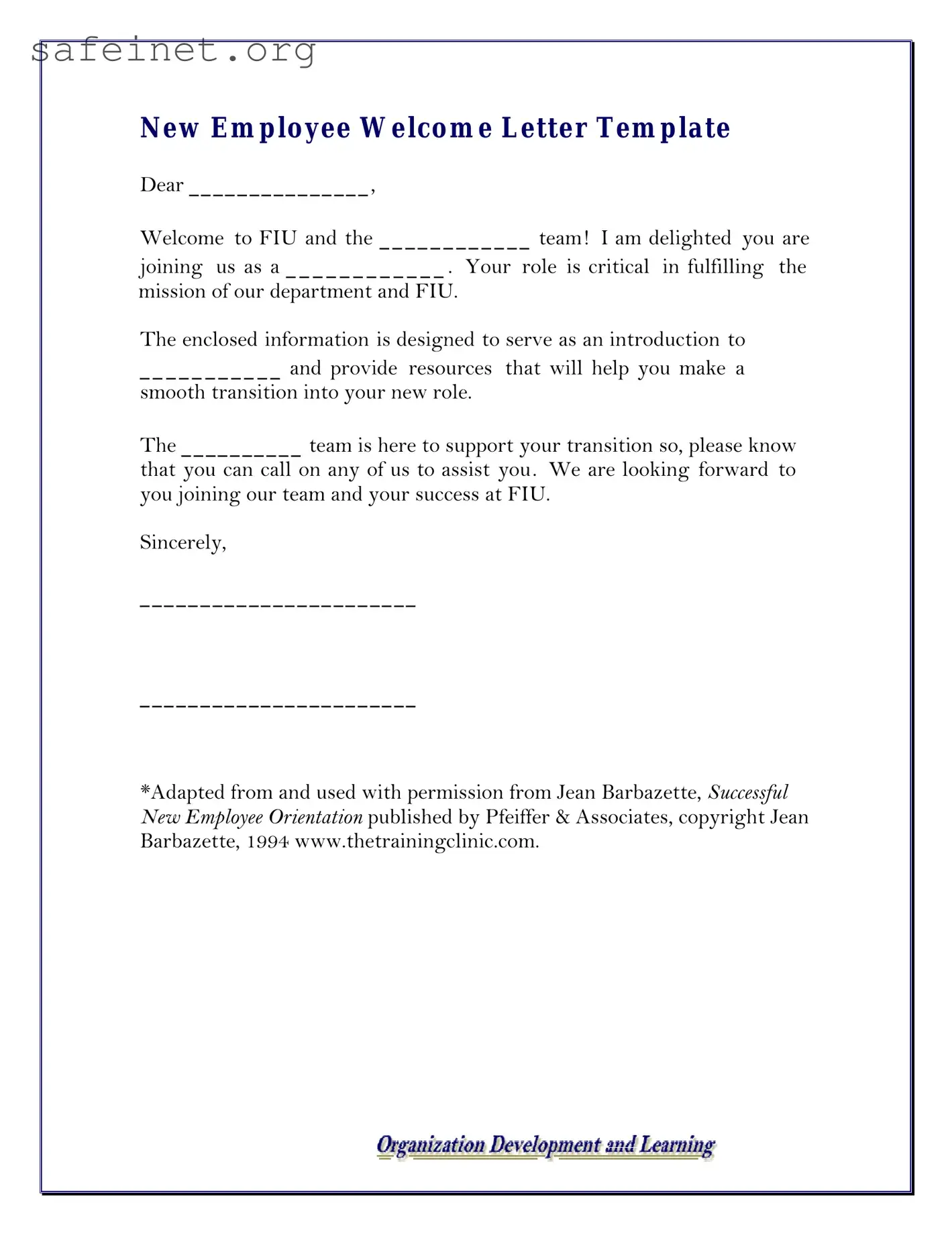What is the purpose of the Email For New Team Member form?
This form serves as a template to create a thoughtful and welcoming email for new team members. It outlines essential information to help them acclimate to their new environment, making their transition as smooth as possible. The email aims to express enthusiasm for their arrival and provide an immediate sense of support from their colleagues.
Who should use this form?
The form is intended for managers or team leaders who are welcoming a new employee into their department. It provides a structured way to communicate vital introductory information about the team and the organization, ensuring that new hires feel valued and informed from their very first day.
What specific information is included in the template?
The template includes a personalized greeting, a warm welcome message, and acknowledgment of the new team member’s role. It emphasizes the importance of the new employee's contributions and presents the existing team as supportive and available for assistance. The format also allows for flexibility, letting the sender customize messages for unique introductions tailored to each new hire.
Can I modify the template to fit my team's culture?
Absolutely. The template is meant to be adaptable. Feel free to add personal touches, specific team details, or any additional resources that may assist the new team member. It’s crucial to make the introduction feel genuine and reflective of your team's unique culture.
Is this form appropriate for all types of employees?
Yes, the Email For New Team Member form can be used for a variety of new employees, including full-time, part-time, and temporary staff. It provides an effective framework for welcoming anyone into the organization, thus fostering a sense of belonging and inclusion regardless of employment status.
How can this email help with employee retention?
A thoughtfully crafted welcome email can set the tone for a positive work experience. By making new team members feel welcomed and valued from the start, you facilitate a greater sense of community and connection. This can ultimately lead to higher job satisfaction and, consequently, better employee retention over time.

